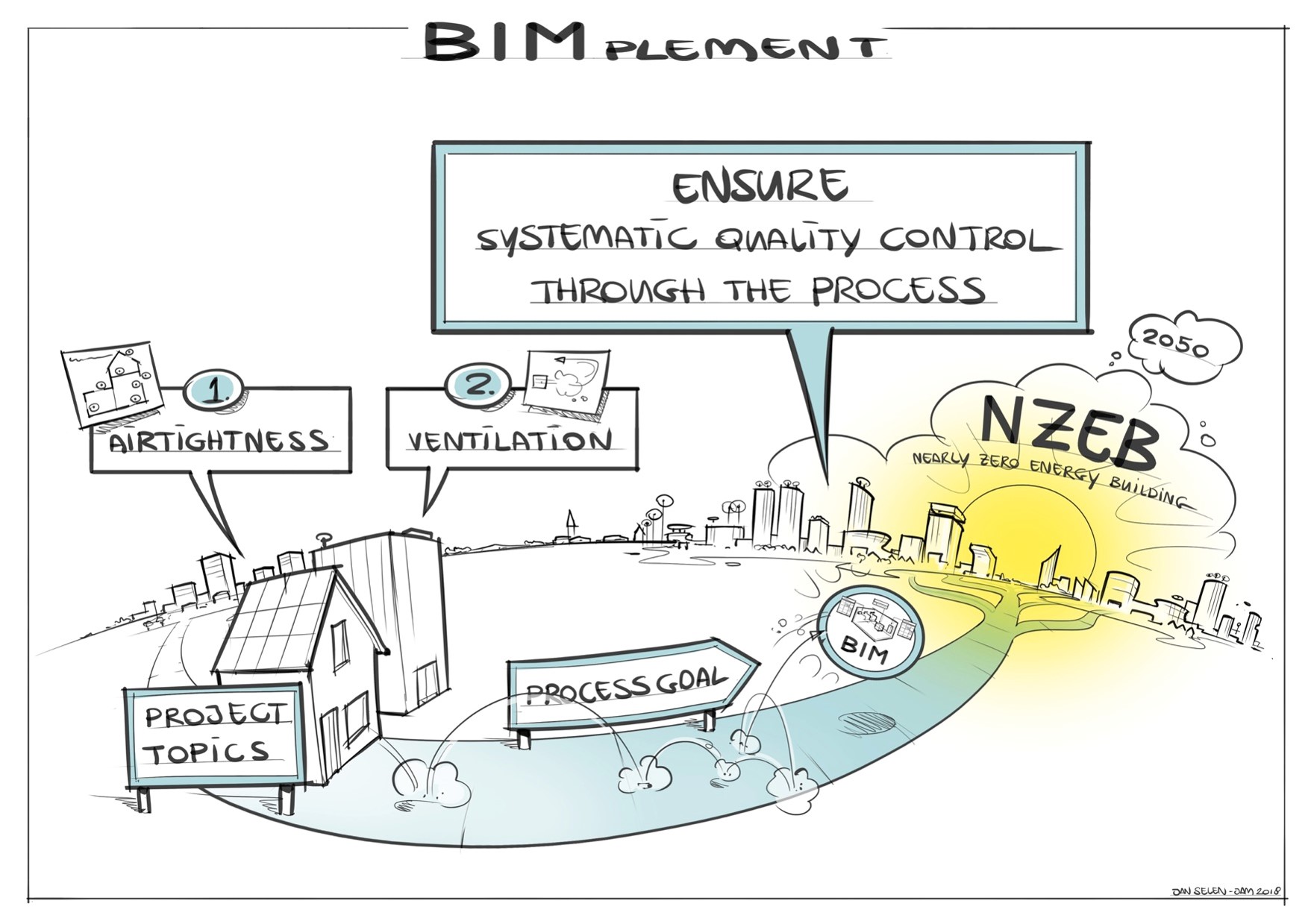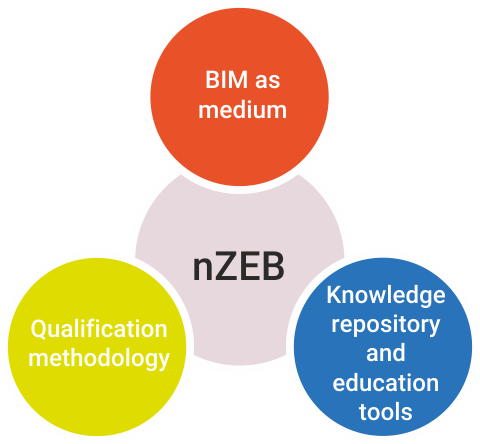BIMplement is a 30 month-long EU funded project involving 10 partners from 5 different countries: France, the Netherlands, Lithuania, Spain and Poland which started in September 2017. The overall objective is to achieve an improved quality for nearly Zero Energy Building (nZEB) construction and renovation by using BIM as a universal information carrier and enabler of the learning process within projects and between projects.
BIMplement will set large scale training, Continuous Professional Development and BIM-enhanced qualification schemes, addressing the entire value chain in a cross-trades and cross-level multidisciplinary approach, strengthened with hands-on and BIM enhanced workplace learning tools. These qualification schemes will be applied in two different topics: building ventilation and airtightness and will be tested in BIM-learning centres and implemented in 50 experimental building sites.

BIMplement is condensed in the following four specific qualitative objectives:
To improve the overall quality of the entire construction and renovation process, from pre-design till operation and maintenance phase
- Developing a methodology to map qualities and skills to improve quality using BIM as information carrier
- Implementing the approach for two selected topics on NZEB
- Bridging the performance gap by using a BIM enhanced workplace learning
- Connecting with lessons learned in recent IEE and H2020 projects
To create a new generation of professionals and craftsmen, qualified to deliver high quality nZEB-projects: Using BIM-enabled workplace learning to create a large number of professionals and craftsmen, on different profession levels, needed in the entire process and equipped with the right skills for the process phases in which they are involved. BIM will support this as information carrier
To foster interactions between different trades and professions
- Qualification methodology that integrates technological, cross-trade and BIM related skills and competences
- Implemented in a Model nZEB Cross-trade Quality and BIM-Skills Matrix
- Developing a BIMplement guide
To sustain the qualification and training schemes a replication and exploitation strategy will be developed and validated
- Making use of the BIM-learning Centres or Field labs
- Developing of a self-instruction BIMplement guide (further exploited and promoted by using the PROF/TRAC open training platform)
- Connecting with suppliers and supplier interest groups through EU networks
BIMplement will offer a methodology to create and standardize the needed qualifications and a range of learning tools to unlock and implement them. To be future-ready subject specific specific qualifications will be enriched with the skills and competences needed when performing the job in nZEB project that is using BIM. By using a standardized methodology, the created qualifications will be transparent and comparable between EU member states, thus facilitating and providing EU mobility.
Qualification methodology Knowledge repository and education tools BIM as medium BIMplement engages new and challenging opportunities now to make a major step forward in the implementation of these qualifications. BIM offer the opportunity to implement results in a BIM-enabled workplace learning environment. This should be done in a cross-cutting process that is: Author: Instituto Valenciano de la Edificación (IVE), 15 May 2018

Recent Comments